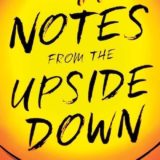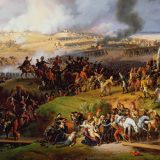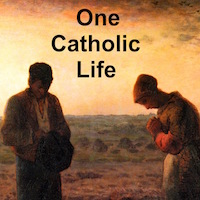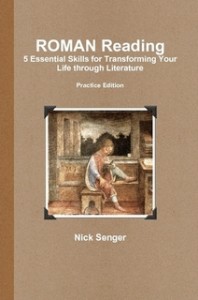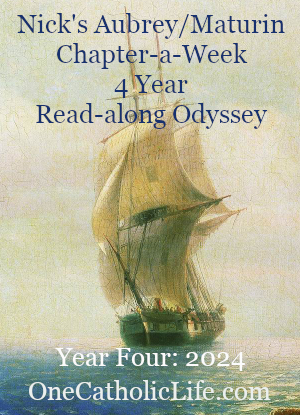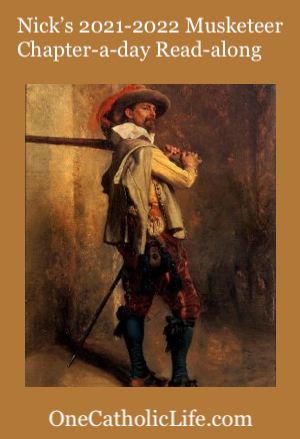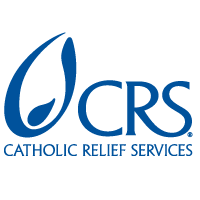Known by His Wounds: Homily for Divine Mercy Sunday
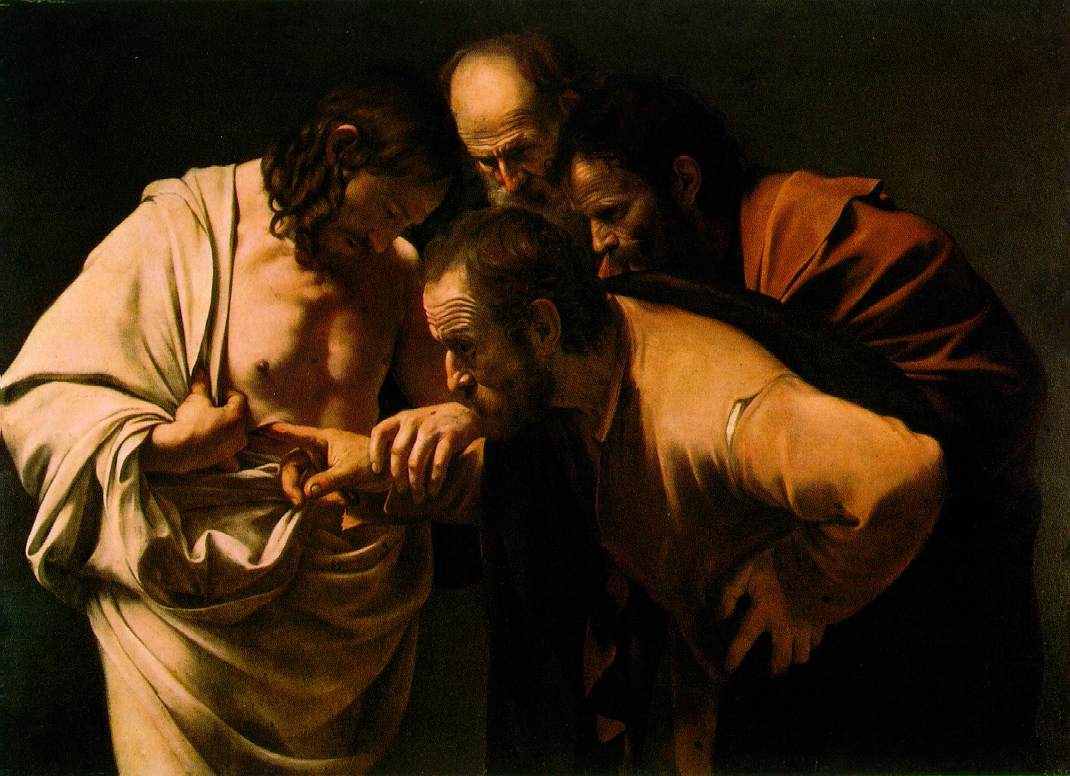
If you have been listening to the Bible in a Year podcast and are still on schedule,
then you probably finished listening to the Gospel of John on Good Friday.
Don’t worry if you’re not on schedule,
my family and I are a little behind, too.
But if you are on schedule, then during Holy Week
you heard John describe all the many signs and wonders
that Jesus worked:
He turned water into wine at the wedding feast at Cana.
He cured the official’s son from a distance.
He healed the man who had been blind, lame and paralyzed for 38 years;
he cured another blind man by making mud and smearing it in his eyes.
He raised Lazarus from the dead.
We have all heard these stories before,
and we know that the signs and wonders
that Jesus worked while he lived among us
were meant to encourage the people to believe in him.
Today we’re told that that is the very purpose of John’s Gospel:
“these are written that you may come to believe
that Jesus is the Christ, the Son of God…”
The signs and wonders Jesus performed were powerful and effective,
even if they were temporary.
Jesus turned water into wine
that was gone once the wedding guests drank it up.
He gave sight to blind eyes that would soon be closed again in death.
He raised Lazarus from the dead only for him to die again.
His bodily cures did not last forever,
and they were never meant to.
But he used those visible signs and wonders,
those temporary cures
to build up people’s faith,
to bring about eternal healing and salvation.
Some might say we need those signs and wonders today,
that since Jesus no longer works such miracles among us,
the Church was better off in its early days.
We might wish to see signs and wonders with our own eyes:
Jesus curing cancer in our friends and family,
or driving out the demons of addiction and depression.
Surely a little extra wine at our wedding this summer would be nice.
Then, like the early disciples,
we would be more easily able to believe in him,
and so would all those we know who have fallen away from the Church.
But let us not be jealous of those early Christians
who had the signs and wonders of Jesus in person
to help them in their belief.
On the contrary, as St. Augustine says,
today Jesus puts those who have never seen and yet believe
ahead of those who believe only because they see.
Even those who lived with Jesus and saw him every day
struggled with their belief.
So fragile was the disciples’ faith at that time,
that even when they saw the Lord
they found it necessary to touch him
before they could believe he had really risen from the dead.
They were unable to believe the testimony of their own eyes,
until they had touched his body
and explored his wounds with their fingers.
Only after this could Thomas,
the most hesitant of all the disciples, exclaim:
“My Lord and my God!”
It was by his wounds that Christ,
who had so often healed the many wounds of others,
came to be recognized himself.
They knew him by his wounds.
Now we might ask:
couldn’t the Lord have risen with a body
without any wounds at all,
a body with no scars?
And we know he certainly could have;
but he knew that his disciples carried within their hearts
a wound so deep that the only way to cure it
was to keep the scars of his own wounds in his body.
The disciples had left everything behind to follow him.
They had devoted their lives to him,
only to see him brutally crucified like a common criminal,
and buried in a tomb, dead and gone,
like all their hopes and dreams, seemingly.
Their pain and disappointment was a gaping wound
deep within their hearts as they gathered together in that upper room.
It was only when the disciples saw the Lord’s wounds,
and when Thomas was able to explore them with his fingers a week later,
that their own deep wounds could be healed,
and their despair transformed into joy.
And when Thomas finally exclaimed, “My Lord and my God!”,
what was Jesus’ response?
“Have you come to believe because you have seen me?”
“Blessed are those who have not seen and have believed.”
And who are those,
if not ourselves and those who come after us?
When, later on, the Lord had ascended from human sight
and faith had had time to take root in people’s hearts,
those who believed in him made their act of faith
without seeing him or any of his signs and wonders,
without touching the one in whom they believed.
And so it has been from that day to this,
through countless generations of believers.
How blessed we are, indeed,
who have not seen or touched the wounds of Jesus,
and yet who believe in him.
Like the disciples, we have our own deep wounds,
and blessed are we who believe the Lord can heal them,
even though we cannot see him or touch him.
On this Divine Mercy Sunday,
we recognize that this is the mercy of God:
that Jesus is the divine physician,
capable of bringing us not merely a temporary cure,
but eternal healing and salvation.
Like the disciples, we gather here on the first day of the week.
We see the bread broken for us
and the wine poured out for us.
Though their appearance remains the same during the Eucharistic Prayer,
yet we believe that they become the Body and Blood of Christ.
When we come forward to receive Holy Communion,
blessed are we who can say,
“My Lord and my God.”
St. Augustine tells us that such a faith is beautiful to behold,
“because it springs from a devoted heart
rather than from an exploring hand.”
Let us not long for the signs and wonders
of the early days of the Church,
but instead let us celebrate these days
in which we live in the eternal presence of Christ,
who can heal us from all of our deepest wounds,
and whose divine mercy is everlasting.
Podcast: Play in new window | Download
Subscribe: RSS






